An A-Z Guide to Traditional Polish Cuisine
Polish food is famous for being simple, hearty and not especially colourful. You simply haven’t had a thorough sampling of it until you’ve tried all the traditional dishes below, all of which you should be able to find in almost any Polish restaurant or milk bar in town. Smacznego!
Barszcz
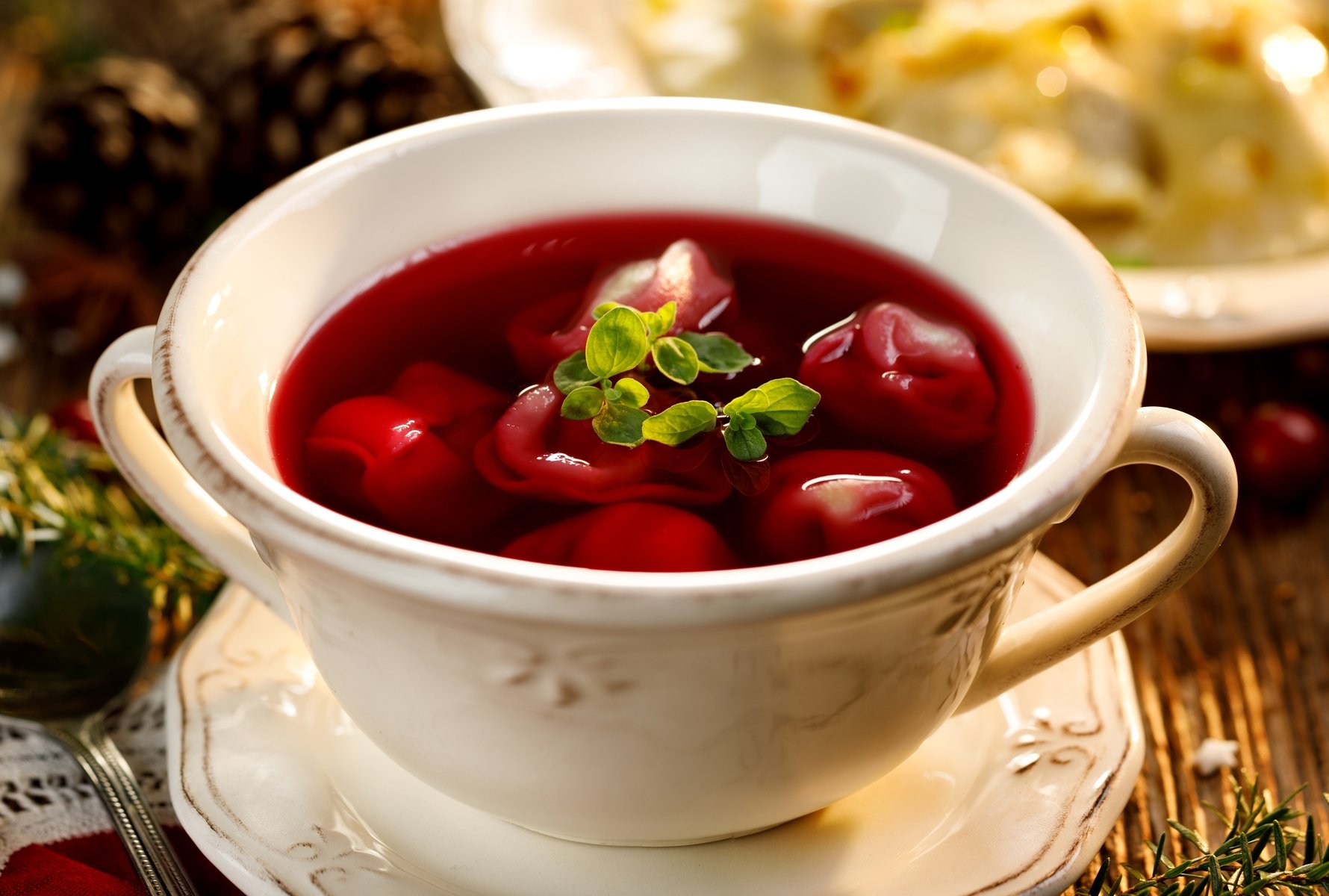 Essentially the same thing as Russian 'borscht,' this nourishing beetroot soup may be served with potatoes and veggies tossed in, with a croquette or miniature pierogi floating in it, or simply as beetroot broth in a mug expressly for drinking ('barszcz solo' - our fave). The latter is a recommended alternative to other beverages with any winter meal, but other variations include 'barszcz ukrainski' (Ukrainian barszcz) - which includes veggies, chunks of beet and cream, and 'barszcz biały' (white barszcz) - which is more like żurek (see below) and doesn't involve beets at all. A Polish staple (just don't call it 'borscht'), we’d be surprised if you can find a bad cup of barszcz anywhere in Kraków.
Essentially the same thing as Russian 'borscht,' this nourishing beetroot soup may be served with potatoes and veggies tossed in, with a croquette or miniature pierogi floating in it, or simply as beetroot broth in a mug expressly for drinking ('barszcz solo' - our fave). The latter is a recommended alternative to other beverages with any winter meal, but other variations include 'barszcz ukrainski' (Ukrainian barszcz) - which includes veggies, chunks of beet and cream, and 'barszcz biały' (white barszcz) - which is more like żurek (see below) and doesn't involve beets at all. A Polish staple (just don't call it 'borscht'), we’d be surprised if you can find a bad cup of barszcz anywhere in Kraków.
Bigos

Traditionally a winter dish, Bigos is a hearty meat and cabbage stew made in large batches. Though there is no standard recipe, ingredients usually include lots of fresh and pickled cabbage, leftover meat parts and sausage, onion, mushrooms, garlic and whatever else is on hand. In fact, metaphorically Bigos translates to ‘big mess,’ ‘confusion’ or ‘trouble’ in Polish. Seasoned with peppercorns, bay leaves, caraway and the kitchen sink, the stew is left to gestate, sometimes underground, for a few days for full flavour infusion. A Polish restaurant or prospective wife can be fairly measured on the strength of their Bigos.
Flaki
If you’re of strong constitution and feeling truly adventurous, spring for flaki – beef tripe soup (that means cow entrails) enriched with veggies, herbs and spices. A hearty standby in most kitchens, we personally save the pleasure for compromising situations involving mother-in-laws, but we still have to give credit to any local restaurant bold enough to keep this on their menu. And anyone brave enough to order it.Gołąbki
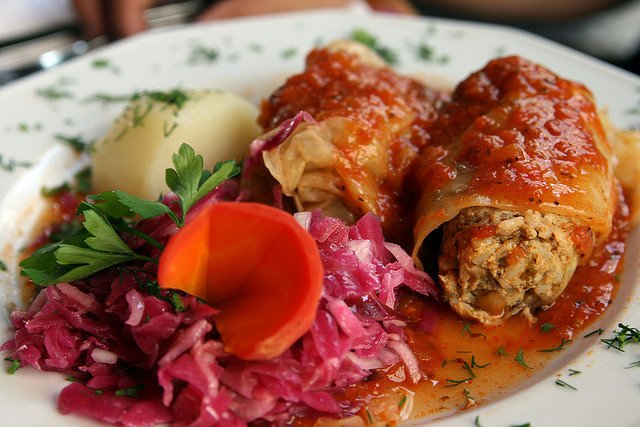
Translating to ‘little pigeons,’ this favourite dish consists of boiled cabbage leaves stuffed with beef, onion and rice before being baked and served in a tomato or mushroom sauce. Polish legend claims King Kazimierz fed his army gołąbki before a battle outside Malbork against the Teutonic Order, and their unlikely subsequent victory has been attributed to the hearty meal ever since.
Golonka
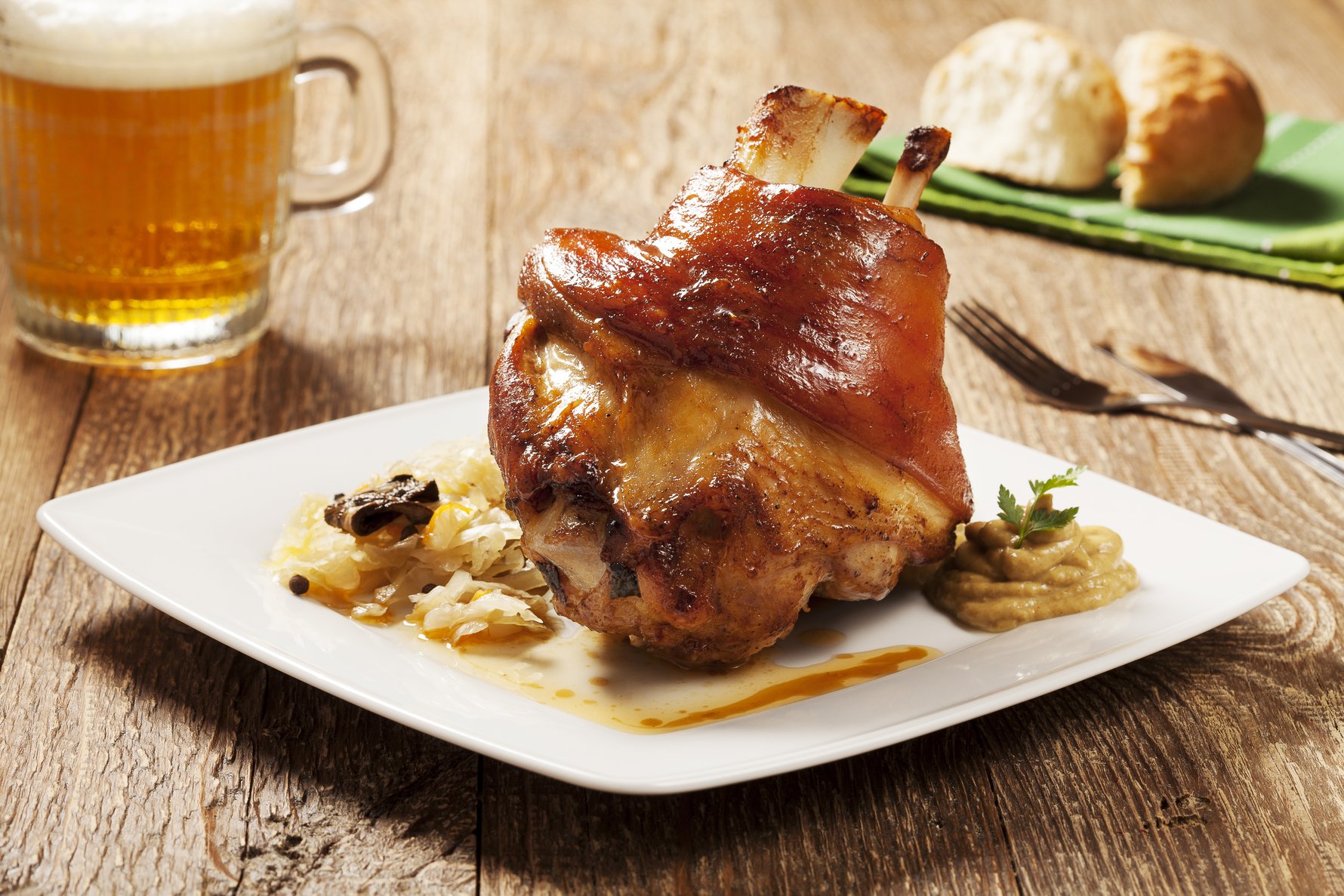
Pork knuckle or hock, as in pig’s thigh - boiled, braised, or generally roasted and put before you on a plate. A true Polish delicacy, the meat should slip right off the bone, be served with horseradish, and washed down with beer. Go caveman.
Kaszanka
This is the Polish variation of blood sausage, in this case pig’s blood mixed with groats, and is generally served fried with onions. Though sold in sausage casings, this is not a form of kiełbasa, as any Pole will emphatically tell you. In many food fairs you'll see giant pans of steamy kaszanka out of their casings (which are not meant to be eaten) being fried and stirred. A variation on the blood dish is czernina, a soup made of duck’s blood mixed with poultry broth. An interesting tale is attached to this dish as it was the dish served by the parents of young women to her suitors as a sign that their proposal of marriage was not accepted.
Kiełbasa
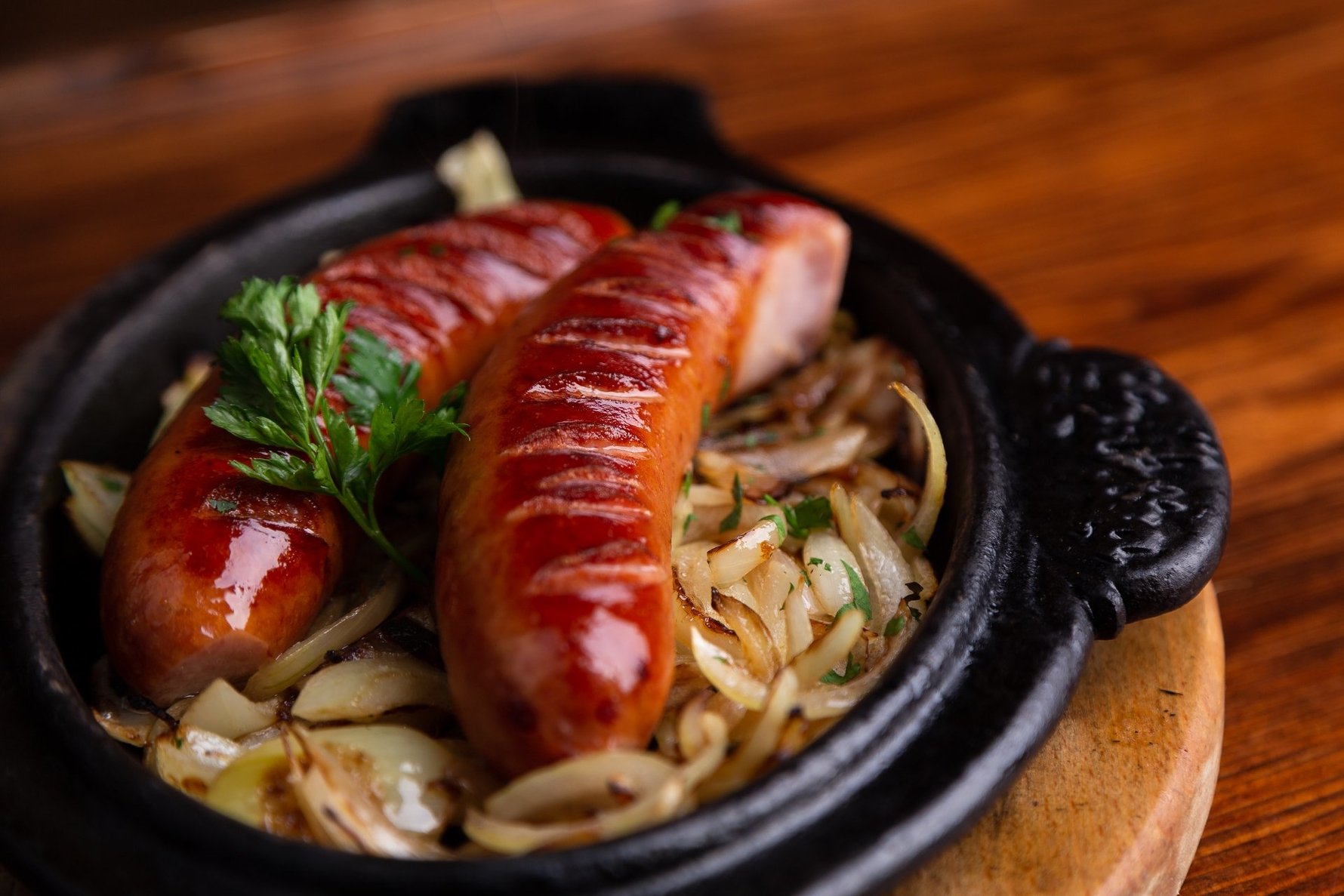 Sausages, and in Polish shops you’ll find an enormous variety, made from everything from turkey to bison. There are a few varieties to watch for including Krakowska - a Kraków specialty seasoned with pepper and garlic, and Kabanosy - a thin, dry sausage flavoured with caraway seed. These you’ll find in any 'delikatesy' or butcher shop, but head to Kielbaski z Niebieskiej Nyski to get a taste of Kraków’s most famous sausage. Two old-timers have been grilling and serving sausage out of a van since time immemorial at this hallowed sidewalk stand.
Sausages, and in Polish shops you’ll find an enormous variety, made from everything from turkey to bison. There are a few varieties to watch for including Krakowska - a Kraków specialty seasoned with pepper and garlic, and Kabanosy - a thin, dry sausage flavoured with caraway seed. These you’ll find in any 'delikatesy' or butcher shop, but head to Kielbaski z Niebieskiej Nyski to get a taste of Kraków’s most famous sausage. Two old-timers have been grilling and serving sausage out of a van since time immemorial at this hallowed sidewalk stand.
Kotlet Schabowy
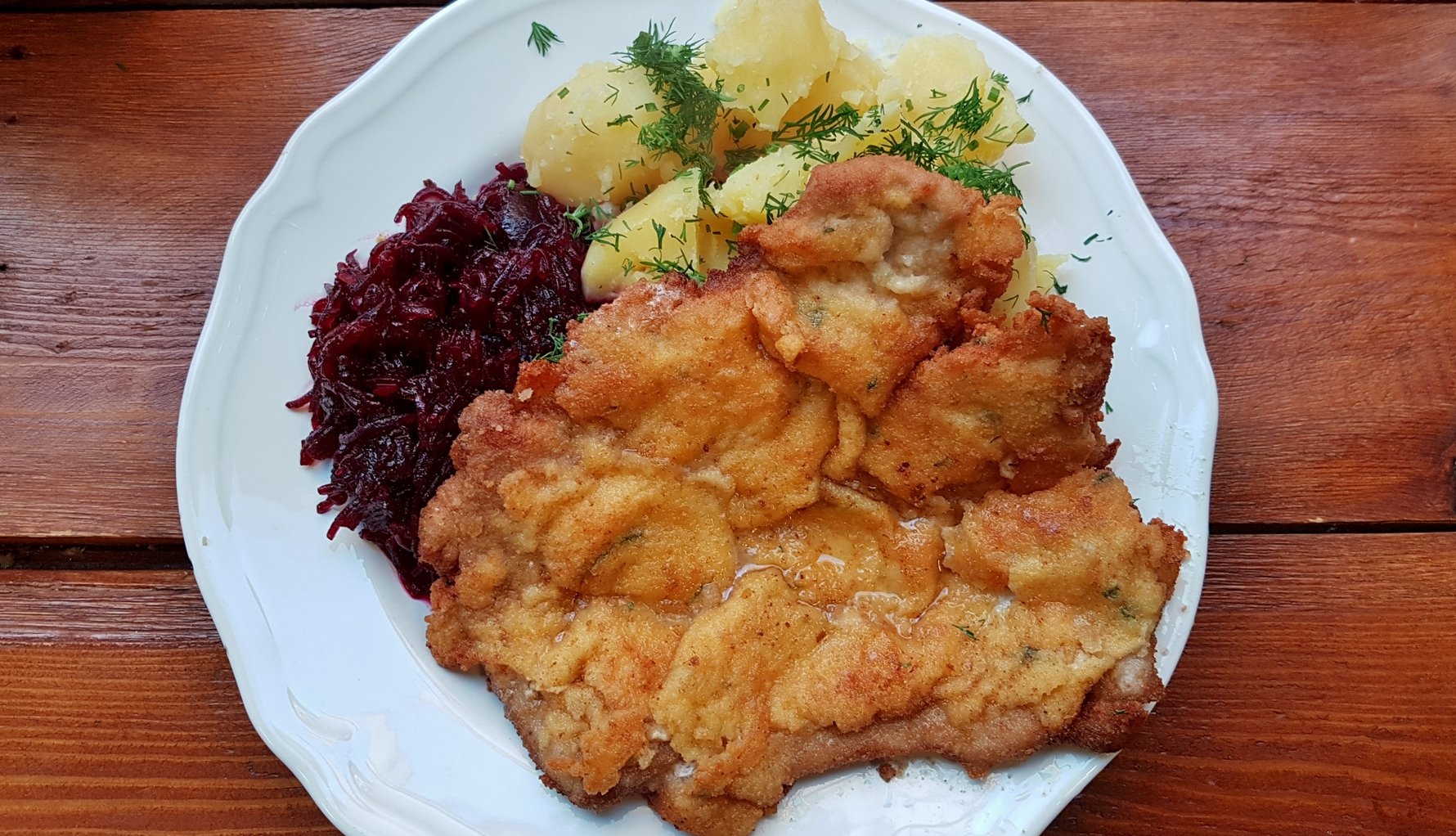
Probably the most popular lunch/supper in Poland is the almighty ‘schabowy’ with mashed potatoes and pickled cabbage, and you can walk into almost restaurant in the country and be assured of its presence on the menu (if the kitchen hasn’t run out of it already). Essentially a breaded and fried pork chop (cutlet), ‘kotlet schabowy’ is quite similar to Viennese schnitzel, and a solid bet for a cheap, filling, risk-free meal. If you’re awoken on a Saturday or Sunday morning by the sound of profuse banging - that’s the collective sound of every housewife in Poland tenderising the meat for this meal with a spiky mallet. So best mind your manners.
Naleśniki
The Polish equivalent of French crepes, these are thin pancakes wrapped around pretty much any filling you can dream of, savoury or sweet. Generally the easy way out in any dodgy Polish dining establishment, even your kids will eat them!Pierogi

PL's most successful culinary export, these doughy stuffed dumplings are traditionally filled with potato (Ruskie), sweet cheese, meat, mushrooms and cabbage, strawberries or plums. Of course in some 'pierogarnia' (pierogi specialty houses) you will find maverick fillings like broccoli, chocolate or liver, as the possibilities are truly limitless. The sole source of nourishment for most Polish children, pierogi are served almost everywhere in the city, but follow the link for the best pierogi in Kraków.
Placki
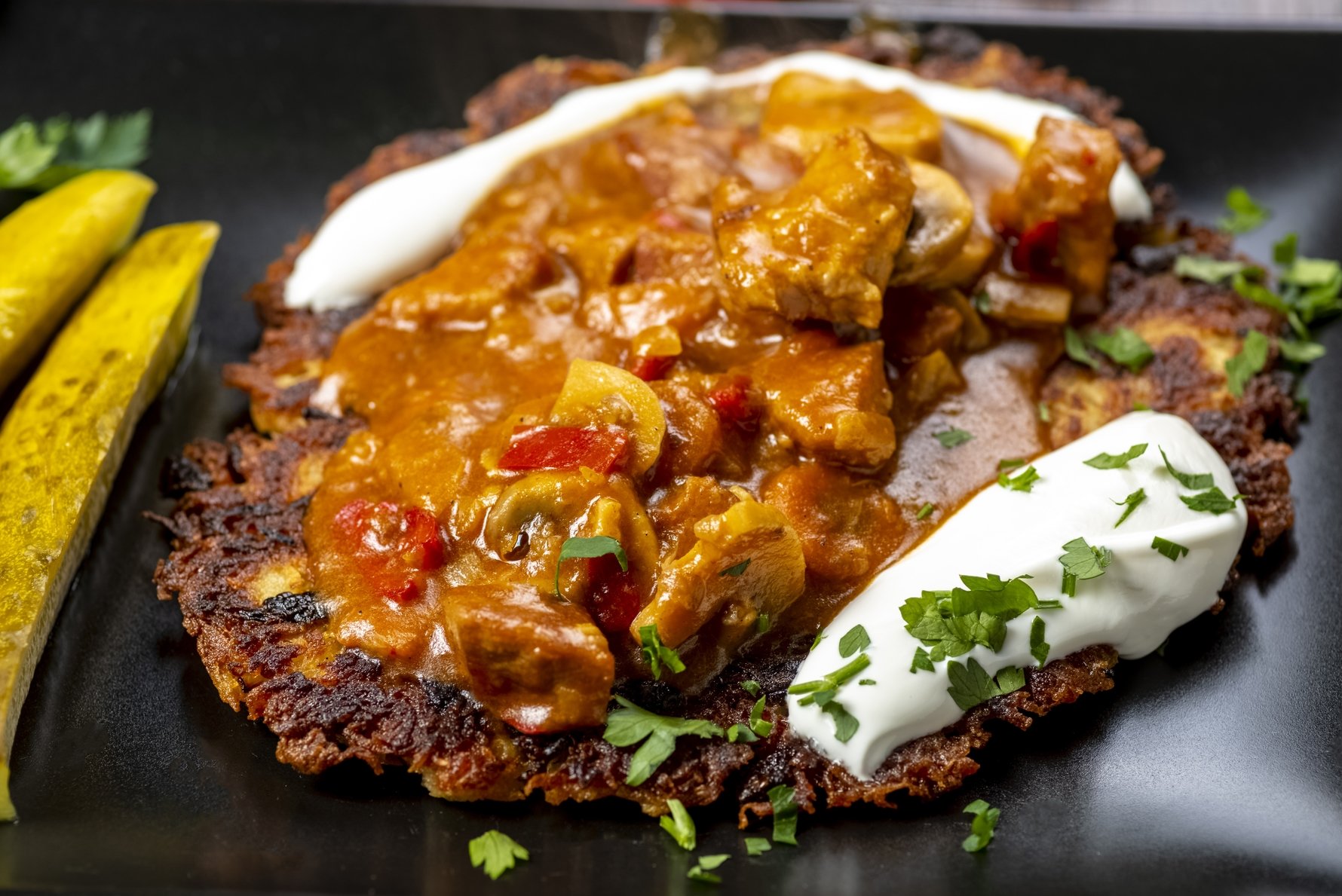
These greasy, fried potato pancakes (‘placki ziemniaczane’) are very similar to Jewish latkes (if that means anything to you) and best enjoyed with goulash on top (placki po Węgiersku). If you're vegetarian or have fussy kids you can also get them 'solo' with just sour cream. Highly caloric, they’re also a tried and true hangover cure.
Smalec
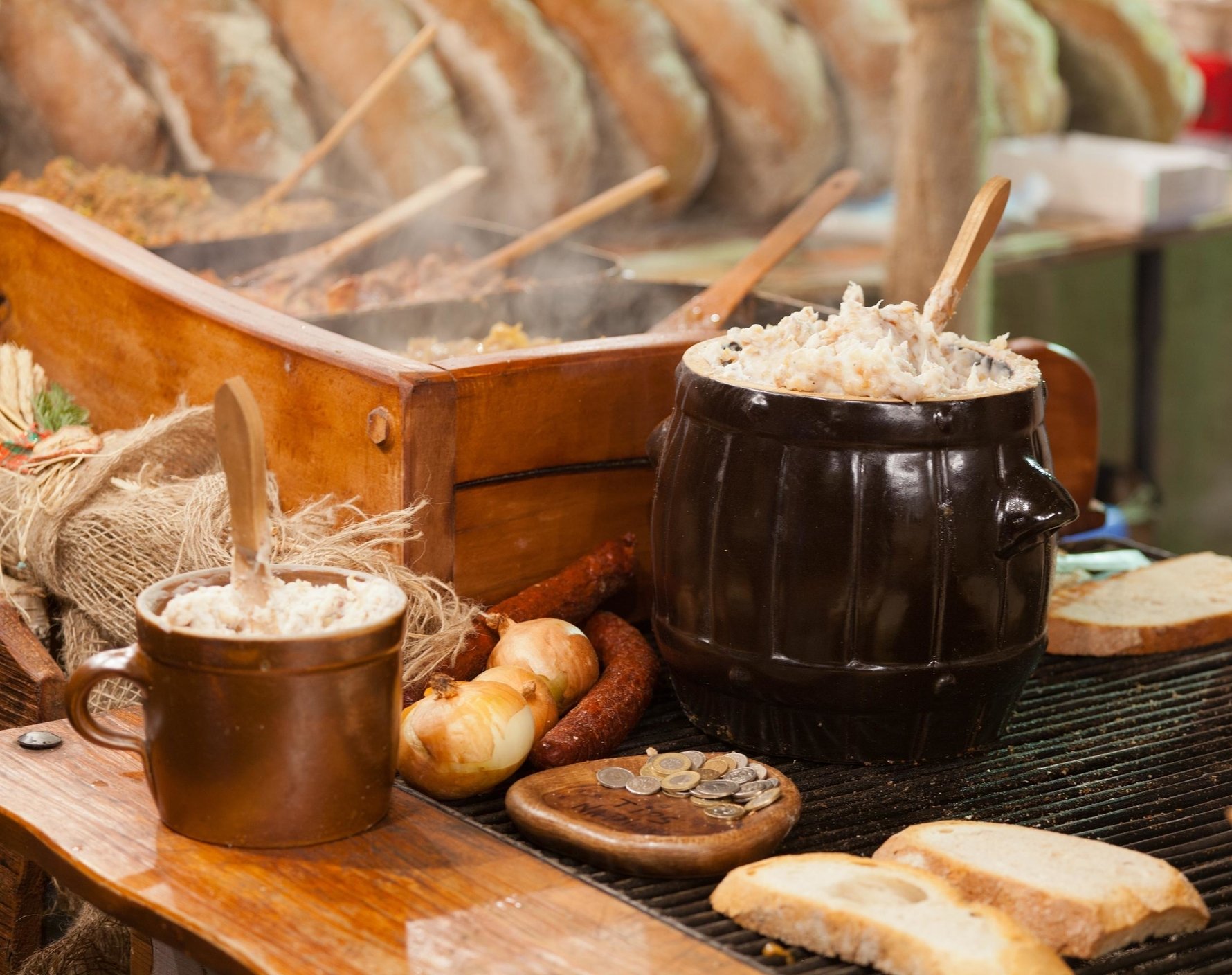
Vegetarians who broke their vows for a bite of sausage or a taste of żurek generally draw the line here. An animal fat spread full of fried lard chunks (the more the better, we say) and served with hunks of homemade bread, Smalec is a savoury snack that goes great with a mug of beer. Any traditional Polish restaurant worth its salt should give you lashings of this prior to your meal.
Zapiekanka
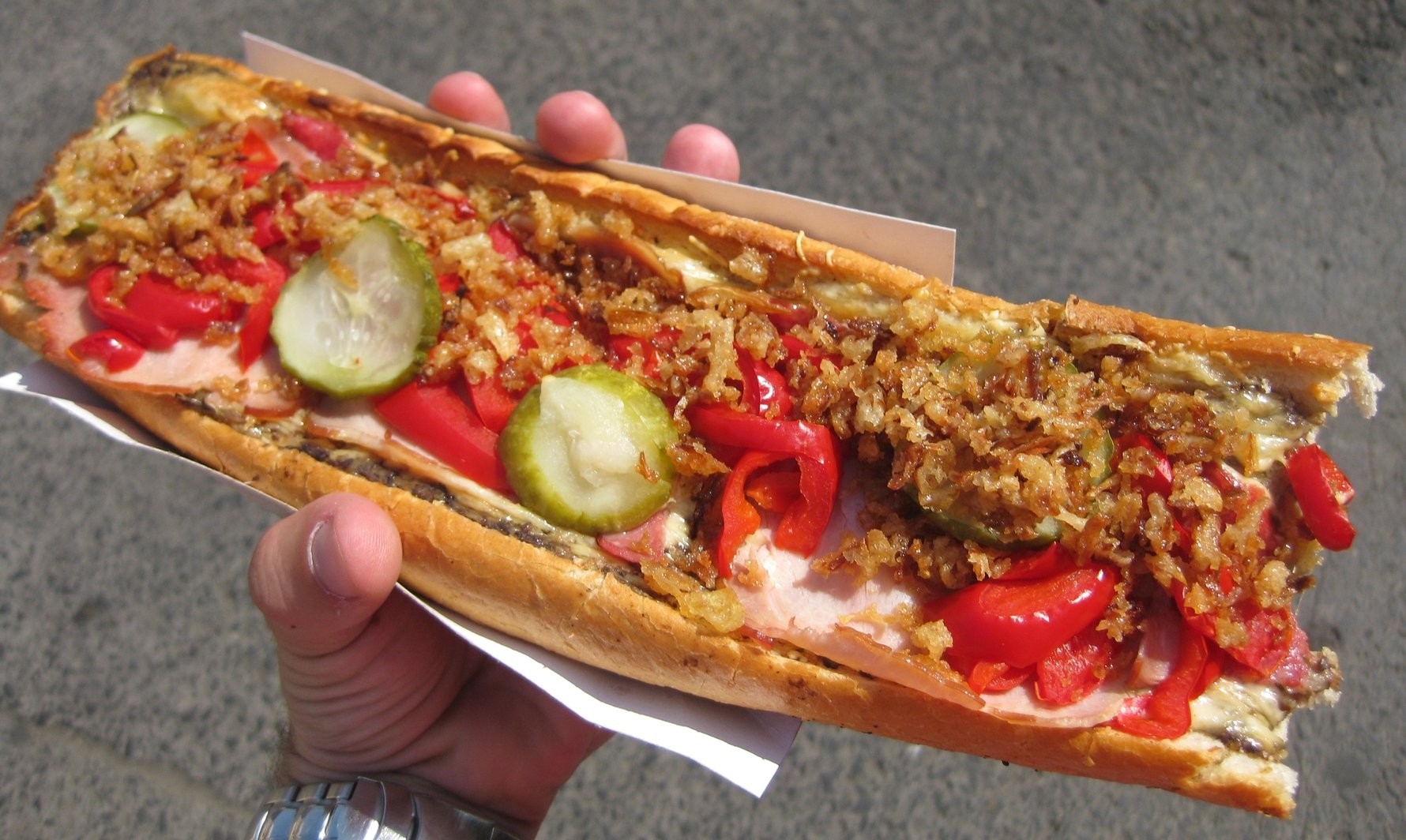 The ultimate Polish drunk food. Order one at any train station in PL and you’ll get half a stale baguette covered with mushrooms and cheese, thrown in a toaster oven and squirted with ketchup. Underwhelming to say the least. However the vendors of Kazimierz’s Plac Nowy have made a true art out of the ‘Polish pizza.’ With endless add-ons (including salami, spinach, smoked cheese, pickles, pineapple, feta – you name it), garlic sauce and chives have become standard procedure at this point. Because of their popularity you’ll witness ridiculous lines at the various windows around the roundhouse, but the wait is worth it. At 8-10zł it’s a great value and will sustain you through a night of heavy drinking. To leave town without having tried a Plac Nowy zapiekanka would be felonious, as would settling for one anywhere else in Kraków.
The ultimate Polish drunk food. Order one at any train station in PL and you’ll get half a stale baguette covered with mushrooms and cheese, thrown in a toaster oven and squirted with ketchup. Underwhelming to say the least. However the vendors of Kazimierz’s Plac Nowy have made a true art out of the ‘Polish pizza.’ With endless add-ons (including salami, spinach, smoked cheese, pickles, pineapple, feta – you name it), garlic sauce and chives have become standard procedure at this point. Because of their popularity you’ll witness ridiculous lines at the various windows around the roundhouse, but the wait is worth it. At 8-10zł it’s a great value and will sustain you through a night of heavy drinking. To leave town without having tried a Plac Nowy zapiekanka would be felonious, as would settling for one anywhere else in Kraków.
Żurek
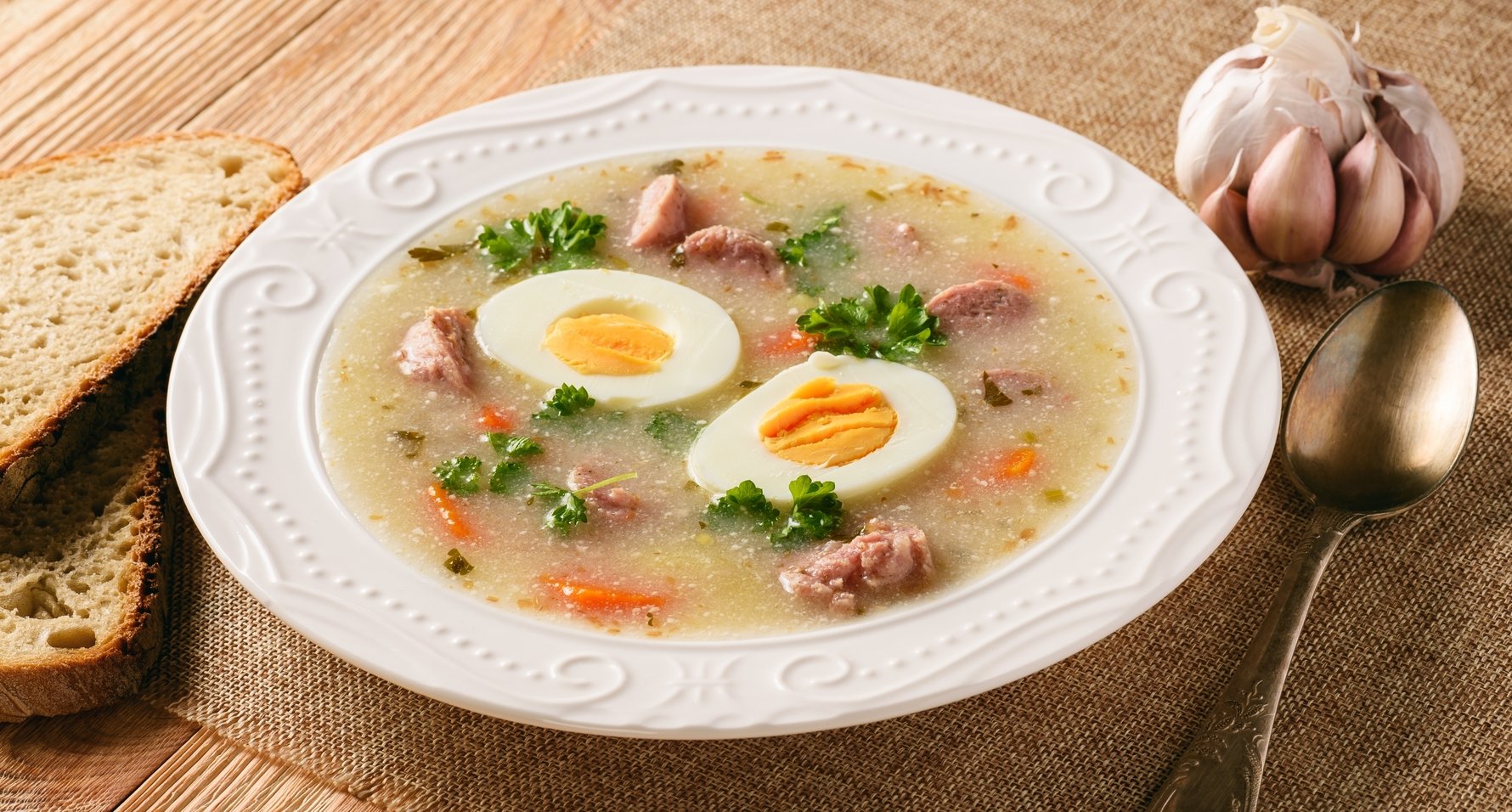 It doesn’t get any more Polish than żurek – a unique sour rye soup with sausage, potatoes and occasionally hard-boiled egg chucked in. If you're lucky you'll get it served in a bread bowl, but it's still excellent without, and a good barometer for the merits of any Polish restaurant. Though the greyish-brown colour may be a tough sell, and the sourness startling at first, don't pass on the chance to try this national soup.
It doesn’t get any more Polish than żurek – a unique sour rye soup with sausage, potatoes and occasionally hard-boiled egg chucked in. If you're lucky you'll get it served in a bread bowl, but it's still excellent without, and a good barometer for the merits of any Polish restaurant. Though the greyish-brown colour may be a tough sell, and the sourness startling at first, don't pass on the chance to try this national soup.


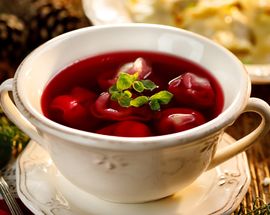
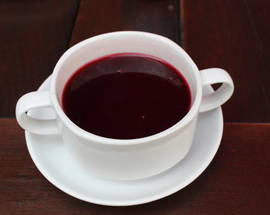
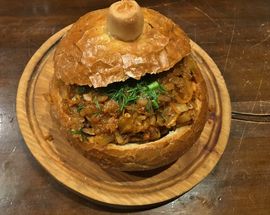
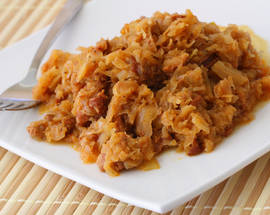
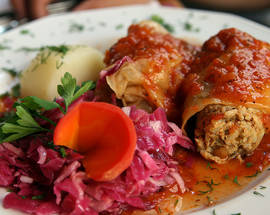
_m.jpg)
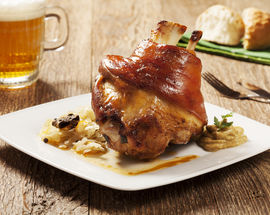

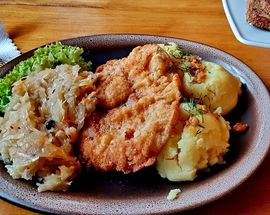
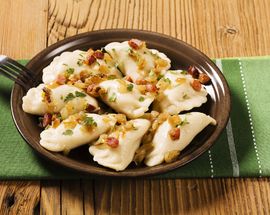

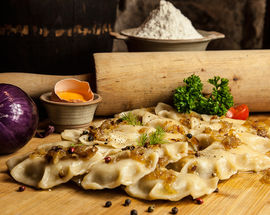
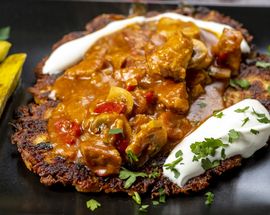
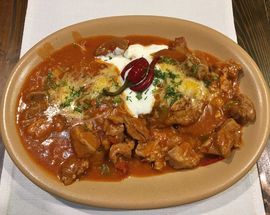
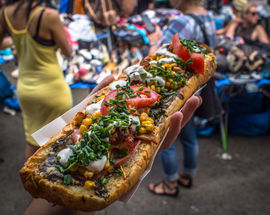


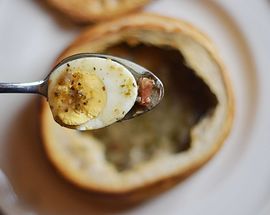

Comments